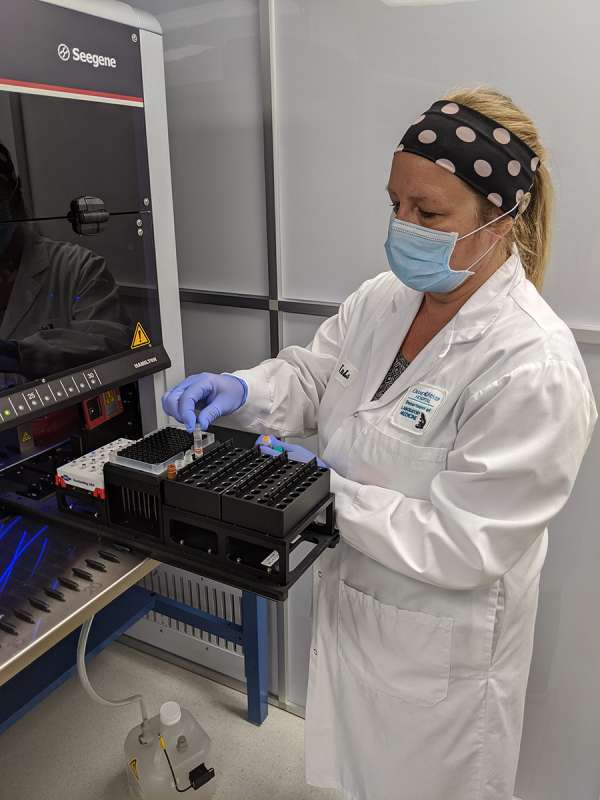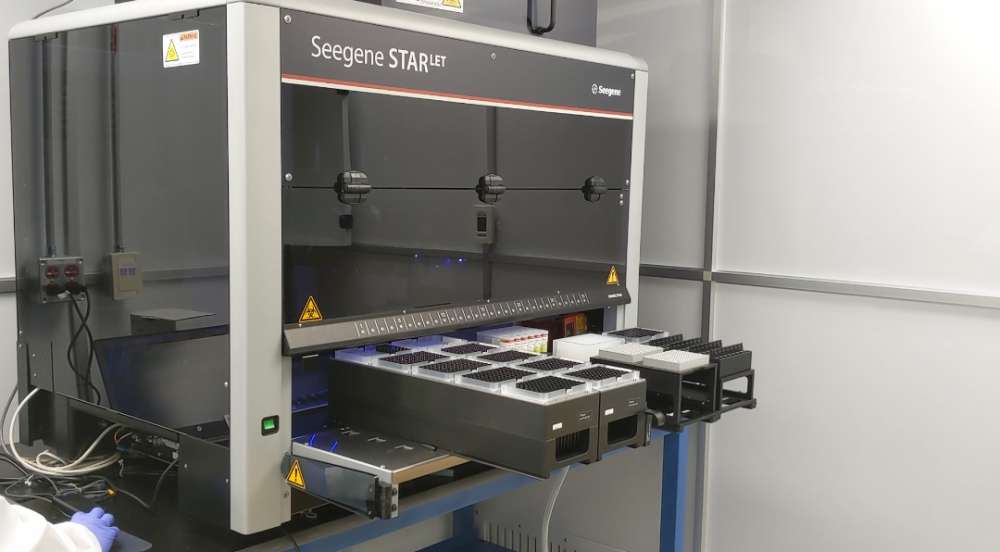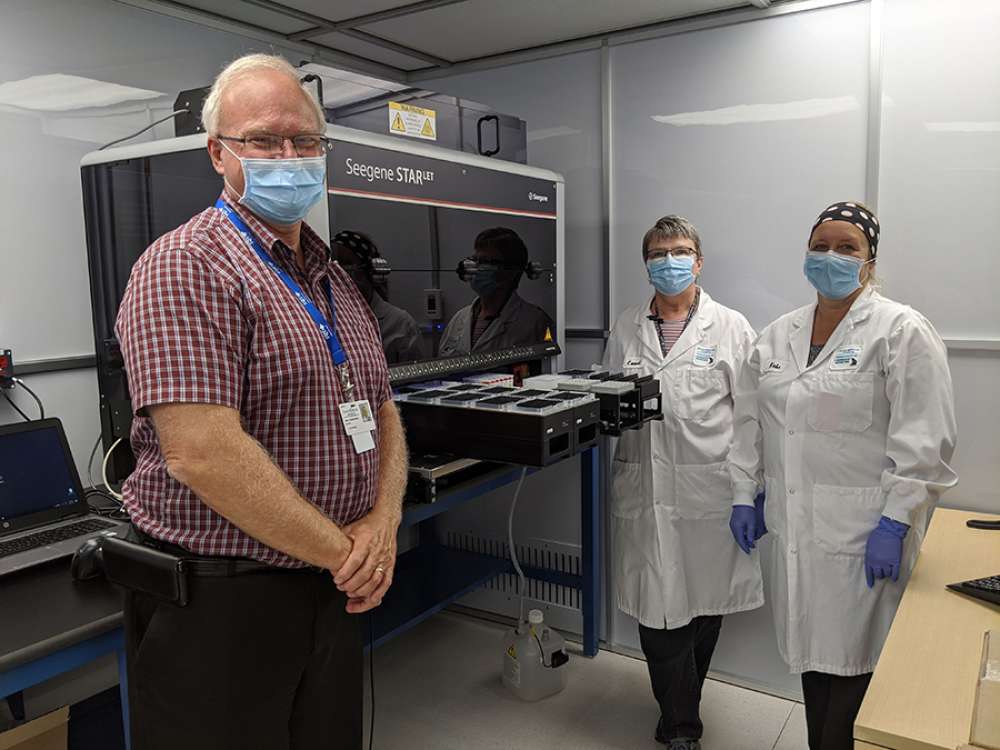In Waterloo Region’s largest lab, the first of two new processing instruments has arrived and will help Waterloo Regional Health Network greatly increase the number of COVID swabs it processes each day. With the capacity for each machine to test 94 swabs every 2.5 to 3 hours, this means WRHN will be able to test up to 1500 COVID swabs every day for faster results.

“Currently, we can process around 66 swabs per day, and most of these are from patients in hospital and healthcare workers,” explains John Vanderlaan, manager of microbiology. “The hospital and clinics collect approximately 700-800 COVID swabs from the community at the drive-thru COVID test clinic, and from patients in hospital and healthcare workers. We had been sending most of these swabs to public health or Toronto’s Mount Sinai Hospital to be processed where it can take 3-6 days to get a result.”

With an increase in testing and a second wave of COVID predicted this fall, WRHN is focused on increasing its ability to process more tests in-house to get results to the community, faster.
“The process to send out tests is very manual, which means it takes more time,” explains John. “Test results are sent to us from Mount Sinai or Public Health Laboratories by fax. Then, they are manually entered into our system, validated and formally signed off on. This all takes time and staff. We have been waiting for these instruments since late May to be able to manage more tests, faster and easier.”

The new Seegene Starlet lab-processing instrument will be integrated with hospital systems.
This means that once swab results are processed, negative results are automatically entered into the hospital’s electronic health system and then released from our system into the Ontario Laboratories Information System (OLIS) allowing community patients to look up their own results.
“We are working to train staff to use the technology and ensure testing accuracy before we begin using it formally. Our second instrument will arrive early August and if all goes according to plan, WRHN will be able to process close to 1500 COVID tests in-house by late August or early September.”


